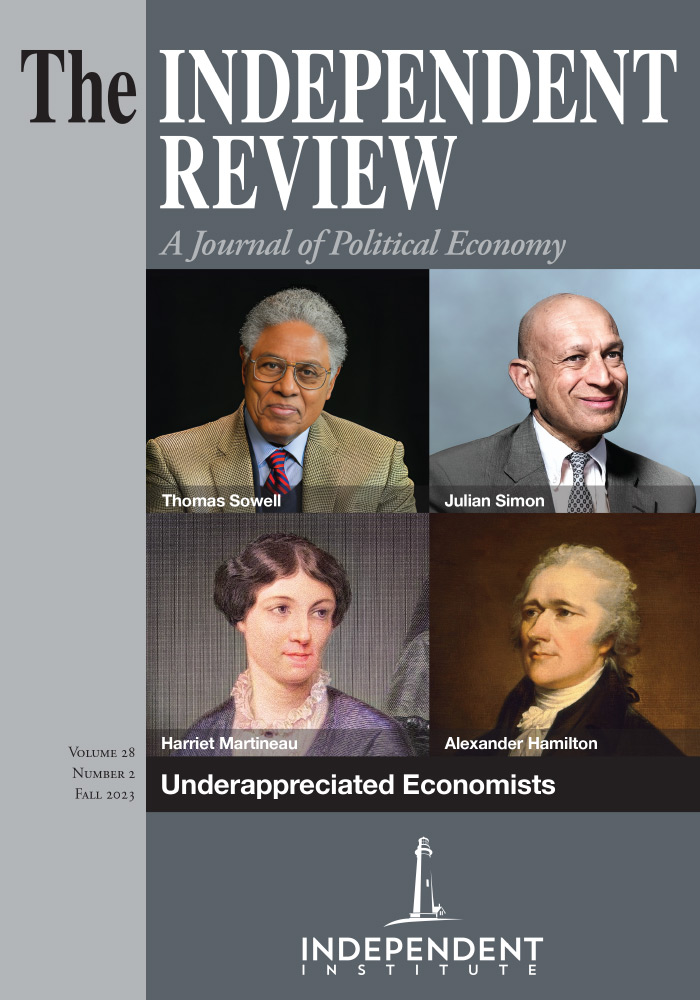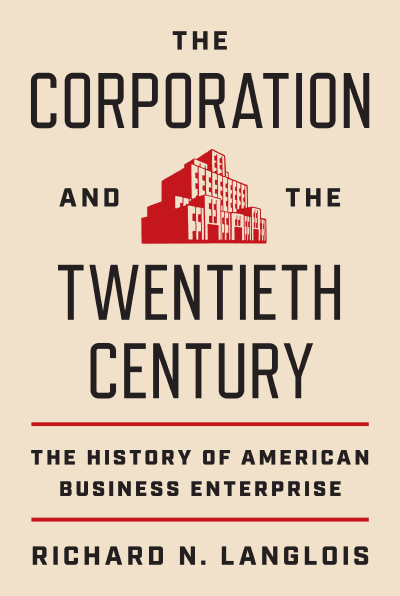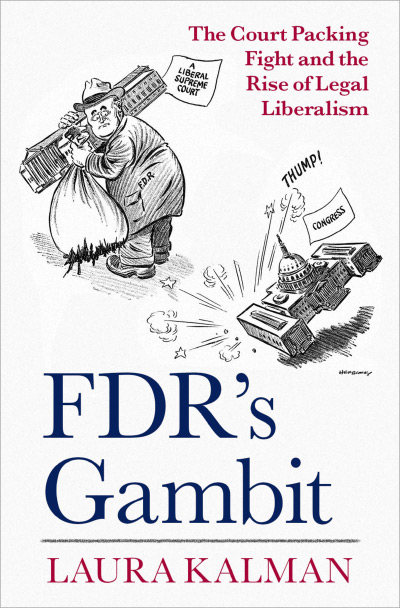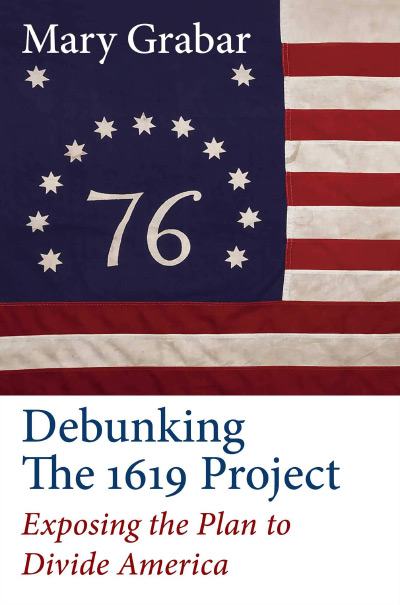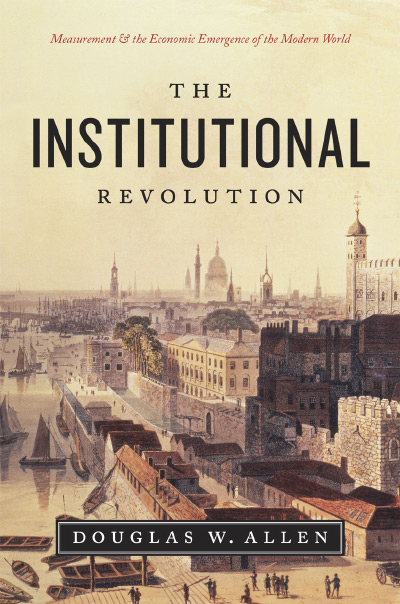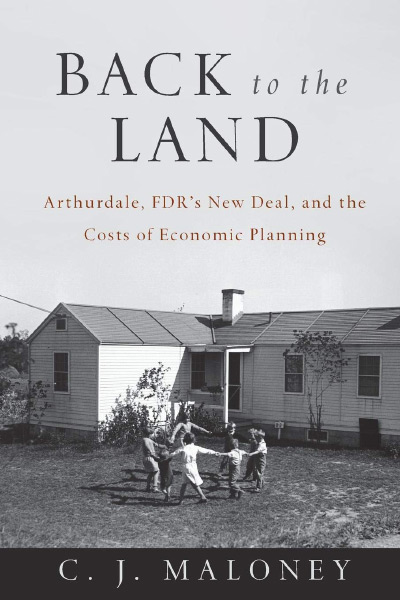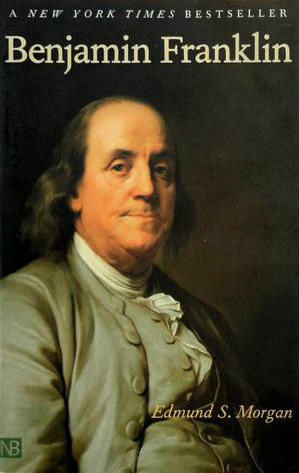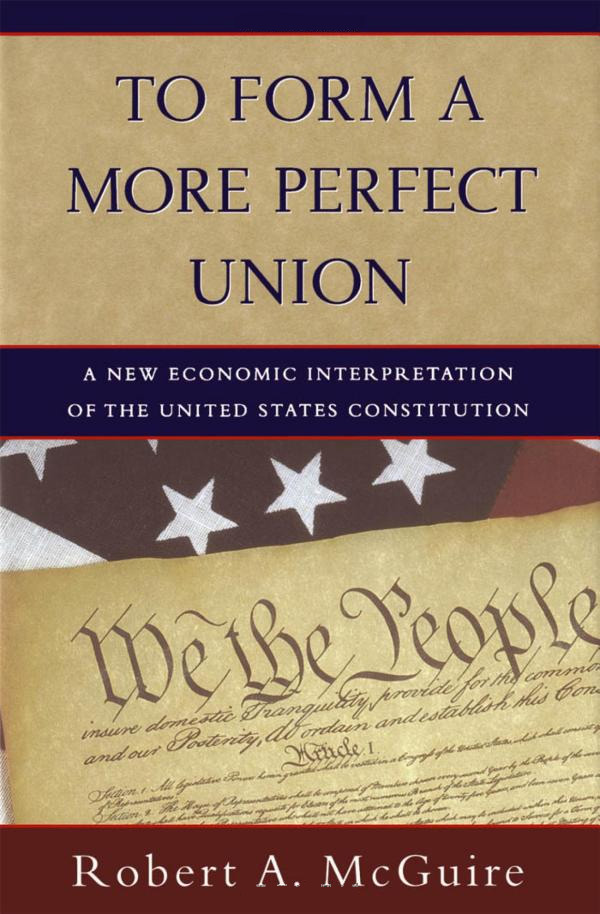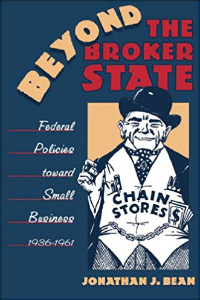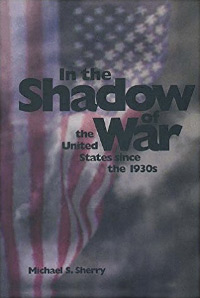The general problem with economic history is that all too often, economists have a weak grasp of history while historians have a poor understanding of economics. Richard Langlois proves himself an exception to the rule in The Corporation and the Twentieth Century, a magisterial study of industrial organization in the United States.
An economist by training, Langlois expertly braids economic theory with political and institutional history to resolve what he considers to be the “central organizational paradox of the twentieth century” (p. 6): the mystery of why expanding markets and cheaper transportation costs led to greater corporate integration in the late nineteenth century but reduced integration in the late twentieth.
Langlois positions his research in response to the foundational text in modern business history, Alfred Chandler’s The Visible Hand: The Managerial Revolution in American Business(1977, Cambridge: Harvard University Press), which argues that business consolidation was inevitable once administrative coordination became more profitable than market coordination. The great irony of the Chandler thesis, as Langlois explains, is that when The Visible Hand was published in 1977, the centralized authority of vertically integrated companies was already giving way to the localized autonomy of multidivisional firms. The question, therefore, is not whether markets or managers can more efficiently allocate resources, but under what conditions does one coordinating mechanism become comparatively more effective than alternatives?
Langlois argues that transaction costs are the deciding factor between market and administrative coordination, but the calculus shifts in response to institutional change. It was not that administration was inherently more efficient than markets at allocating resources, but the distortion of markets through regulatory policy gave relative advantage to administrative coordination until the 1970s.
Langlois makes an important contribution to business history by demonstrating how public policy fueled industrial combination for much of the twentieth century. Critics have long noted, for example, the absence of the state in Chandler’s history, and Langlois provides a welcome corrective for this oversight by thoroughly detailing the various policies that altered the economic landscape and influenced corporate decision-making. To give but one compelling example, he points to the Great Atlantic & Pacific (A&P) grocery chain to illustrate how cheaper distribution helped spawn the chain-store revolution in Chapter 5 (p. 180), he covers New Deal policies in Chapter 6, and in Chapter 8, he brings these development together to explain how the 1936 Robinson-Patman Act and chain-store taxes encouraged the A&P to vertically integrate and consolidate its small chain stores into large, centralized supermarkets (p. 335).
The historical narrative through most of the book mirrors the ratchet thesis. The crises of depression and war fueled state intervention in the economy, leading to the breakdown of well-functioning markets. Because prices serve as conduits for localized knowledge, Langlois notes, the distorted price signals of crisis policies gave “artificial prominence, and an extended life” to administrative coordination within the organizational structure of highly integrated firms (p. 8). Consistent with the ratchet thesis, Langlois makes the important observation in Chapter 5 that the decentralized multidivisional firm originated in the 1920s, when the economy enjoyed some brief respite from the heavy-handed policies of World War I. By placing the multidivisional organizational structure alongside Chandler’s vertically integrated multiunit firm, Langlois illustrates how centralized organization waxed and waned in response to regulatory policy.
Langlois considers antitrust policy a “central vein” in his explanation for corporate consolidation (p. xi), though antitrust litigation seems to take a backseat to other forms of regulation. Only in Chapter 8, which covers the post-war era, do antitrust suits play a substantial role in helping preserve, if not fuel, integration, which helps explain the persistence of consolidated firms in the decades following World War II. While I believe his assessment of antitrust policy is largely sound, his emphasis on this part of the story seems to be driven less by its relative explanatory value, and more by a desire to disabuse readers of the misguided belief that antitrust laws successfully constrain consolidation and preserve competition. For most of the book, other forms of regulation—particularly those that distort price signals—play a bigger role.
Langlois’s penchant for historical context is both a strength and weakness. Histories of the corporation tend to treat the institution as if it developed in a vacuum. The bulk of the literature focuses on either the legal or organizational history, with little consideration of how culture and politics shaped institutional development. Langlois’s narrative, however, embeds the corporation in the society around it, such as his discussion of World War I in Chapter 4. Rather than focusing exclusively on state control of private companies during the war, he discusses the broader aspects of Progressive warmongering that justified increased federal intervention in all areas of American life. This context helps underscore how the corporation fit into the general ideological and political trends of the era.
At times, however, the historical context seems unnecessary and inaccurate. It is probably an oversimplification to blame Herbert Hoover’s failed reelection campaign on Franklin Roosevelt’s opposition to prohibition, but this only raises the question of why Langlois found it necessary to devote several pages (pp. 202 –205) to prohibition for the sole purpose of introducing FDR in a business history that already boasts nearly eight hundred pages. Finding the balance between sufficient and excessive background information is a perennial challenge for historians, but The Corporation and the Twentieth Century could likely shed a hundred pages without any substantive loss.
Another noteworthy aspect of the book is Langlois’s effort to weave intellectual, political, and business history together. Business historians—following Chandler’s lead—often suffer from blunt materialism, focusing solely on incentive structures at the expense of human agency and historical contingency. Langlois, however, explores the ideological underpinnings of historical and economic change, meticulously detailing the Progressive faith in “scientific management” for both public and private enterprise. What makes this perspective especially valuable is that it challenges a common historical assumption that positions the firm and the administrative state as oppositional forces that evolve in reaction to each other. Rather, the administrative state and consolidated corporations flowered from the same Progressive seed. This insight helps bridge the divide between the emergence of the “autonomous federal bureaucrat” and the corporate manager (p. 60).
Although his foray into intellectual history is laudable, it is marred at times by oversight and error. Langlois confines his survey of Progressivism to its influence on state-building and legal theory. He neglects to consider Progressive thought among business leaders, who—like the Progressive intellectuals—believed consolidation was a natural and beneficial phase of social evolution. In this regard, Progressive ideology influenced organizational decisions in much the same way it shaped public policy—a point Langlois largely overlooks. Similarly, it is curious that he fails to explore the Progressive antipathy for economic competition and, by extension, the Sherman Antitrust Act, which are important to understanding the ideological support for business consolidation. More than an oversight, he mistakenly overgeneralizes the Progressive disdain for trusts by treating Louis Brandeis as representative of the Progressive outlook, when in reality, Brandeis was something of an outlier among early Progressives for his hostility to consolidated companies (this is also true for Thorstein Veblen, though Langlois seems to draw his generalizations more from Brandeis). The typical Progressive at the turn of the century championed industrial combination as a cooperative alternative to the cutthroat competition of the market.
On the whole, The Corporation and the Twentieth Century makes a valuable contribution to business history by showing, with exceptional thoroughness, the relationship between regulation and corporate governance. With a rare command of both economics and history, Langlois makes a compelling case for how regulatory policy—including antitrust laws—encourages companies to integrate and centralize. For readers who are concerned with the tech giants of the twenty-first century, his insights are worth reflecting upon.
| Other Independent Review articles by Christopher J. Calton | |
| Spring 2024 | Homelessness Is a Housing Problem; Homelessness in America |

